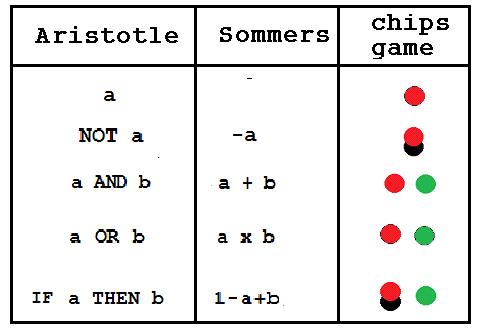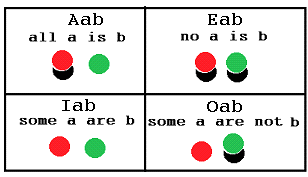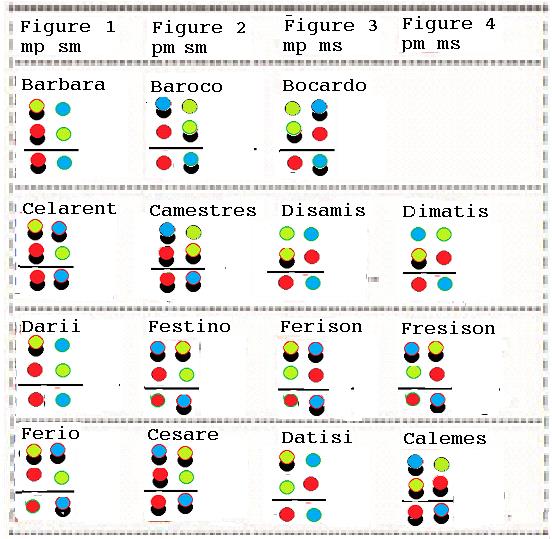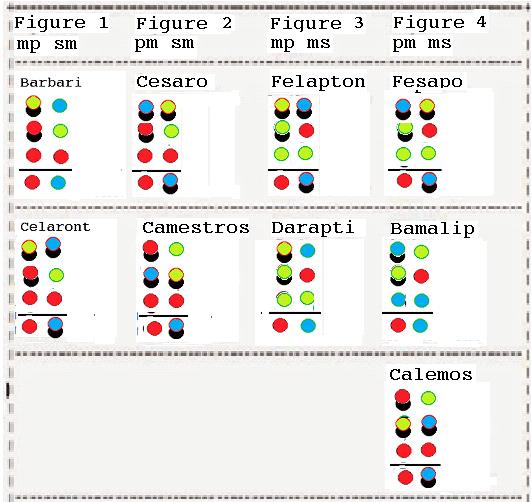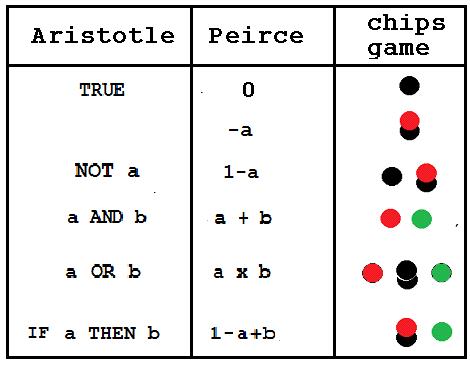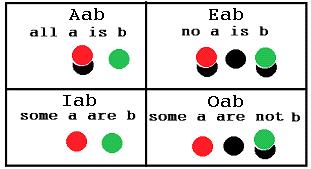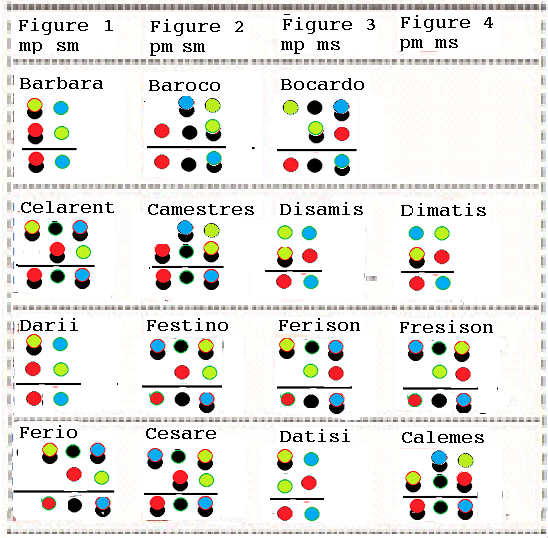Armahedi Mahzar (c) 2016
Lately, I had finally proved the validity of the 24 syllogisms as it is discovered by Leibniz using object algebra which is the total pictorialization of the Kauffman Box Algebra which is the equivalent formalization of the pictorial primary algebra of George Spencer Brown using the CROSS symbol.
I was so excited, I thought that I had found the simplest formalization of syllogistic after discovered the complexity of George Boole equation representing the solution of the the general syllogisms in his book the Laws of Thought.
The Elective Algebra
But later on I know that I was wrong, since later I discovered an article The Calculus of Logic by Boole in 1848 before he published his Laws of Thought in 1853.
He called his logical calculus as the elective calculus. In this calculus he represented the four categorical propositions of Aristotle as simple linear equations.
All x is y was written as x=ay, No x is y as x=a(1-y), some x is y as ax=by and some x is not y as ax=b(1-y). The conclusion of a syllogism is calculated by elimination the same variable in the equations represent the premises.
Using the new notation used by computer scientists All x is y was written as x=ay, No x is y as x=ay’, some x is y as ax=by and some x is not y as ax=by’
The Game of Chips and Cards
I was dumbfounded to find out the simplicity of the method. I used it for all first figure syllogisms. Inspired by my success to simulate Kauffman Box algebra with a game of things, I try to simulate the elective calculus proofs in a kind of game of thing.All I need is a piece of paper and different colored chips to represent the variables and cards to represent the constant coefficients.
The game represents the categorical propositions of Aristotle as an arrangement of chips and cards inside and outside the paper according certain formation rules. The premises are represented by chip box arrangement.
The following table is the game representation of the categorical propositions of Aristotle which are represented by Boole as linear equations. The left side of the equation is represented by chip and card outside a piece of paper. The right side is represented by chip and card upon the paper.
Simulating the deductions
The premises are placed in the paper according the above rules then we get the conclusion by following transformation rules. The conclusion can be established by removing the pair of chips with same color positioned in and outside the paper and replacing the the pair of cards of different colors with a single card of another color.
In the following picture it is shown the two steps transformation to deduce the conclusion of the syllogisms of the first figure
Barbari and Celaront can be gotten by adding a representation of some x is x or Ixx to the conclusion of Barbara and Celarent respectively and transforming the result by following the simple transformation rules above.
The syllogisms in the other column of the following Leibniz table

can be proved by showing that the conclusion of it can be gotten by following the same easy rules of transformation. How can it be done left as exercises for the readers.
Afternote
The syllogistic game as it is shown above is very simple so it can be taught to a kindergarten kid. However though it can conclude the conclusion of all valid syllogism. It also prove a conclusion from invalid syllogisms. So we need another game simulation for Boolean algebra. I hope I will explained the arithmetical method using Boole original notation in the next blog and simulate it in another kind of game of things.


















 of the Yale university who created the WFF’N PROOF: a game of logic based on Polish notation.
of the Yale university who created the WFF’N PROOF: a game of logic based on Polish notation.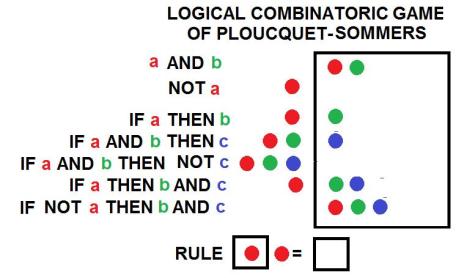
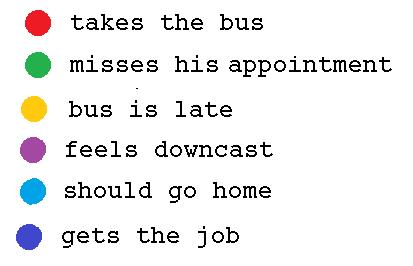

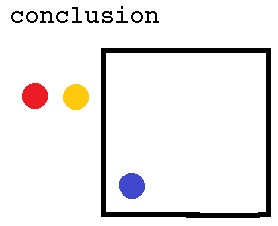




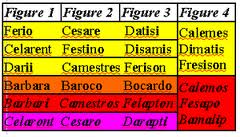
 to express the same logical expression as . Later, Lousis Kauffman in his Box Algebra represent the same logical expression as
to express the same logical expression as . Later, Lousis Kauffman in his Box Algebra represent the same logical expression as .
. Finally, I replaced Kauffman letters with colored chips , to get
Object Logic algebra the representation of the logical expression IF a
THEN b is
.
. Finally, I replaced Kauffman letters with colored chips , to get
Object Logic algebra the representation of the logical expression IF a
THEN b is
 .
. 